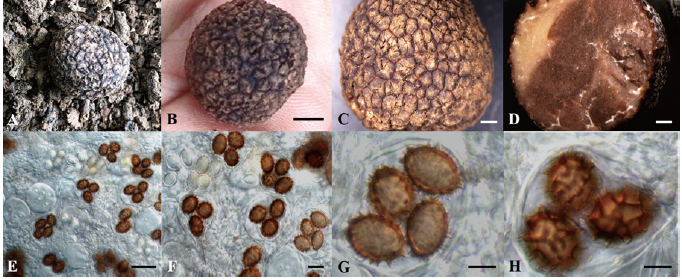Abstract
We collected the ascomata of
Figures & Tables

Fig. 1. Morphological characteristics of . Ascoma (A, B), surface ornament (C), peridium and gleba (D) asci (E, F), and ascospores (G, H) Scale bars: B=5,000 μm, C, D=2,000 μm, E=50 μm, F=20 μm, G, H=10 μm.


